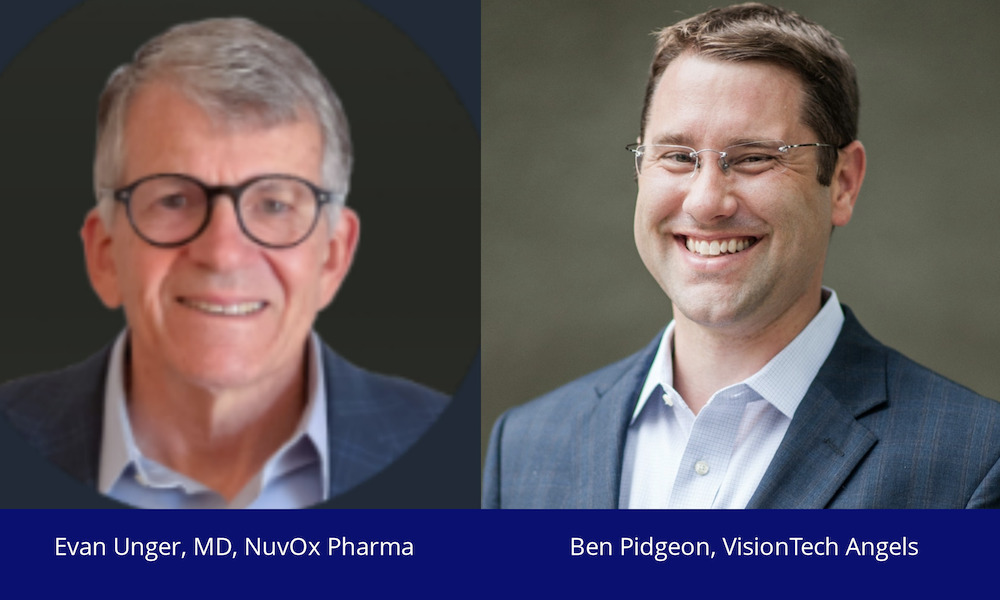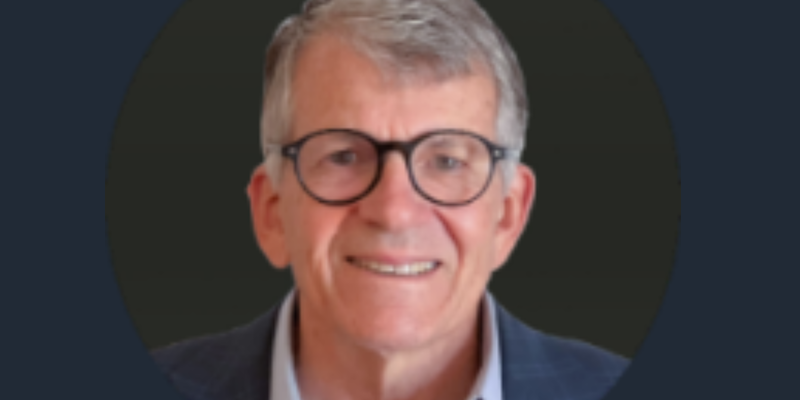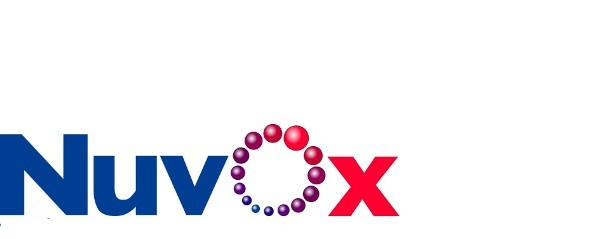I was introduced to Dr. Evan Unger by Mike Eckert of the NOLA Angel Network in New Orleans. Their group is syndicating an investment opportunity in NuvOx Pharma, a clinical stage pharmaceutical company developing a drug that significantly improves the flow of oxygen from lungs to blood and from blood to tissue. The drug has applications in treating cancer, stroke, acute respiratory distress syndrome, and other fatal diseases. I invited Evan to meet with the VisionTech Angels Screening Committee earlier this month. The group was impressed with NuvOx, its leadership team and board, traction, and the investment opportunity, and we invited him to present at our February 23rd virtual pitch events. Here’s a preview.

BP: I went through your website and was very impressed by your team, starting with yourself.
EU: I’ve been busy: board-certified radiologist and inventor; 30 years as a professor of radiology and bioengineering; have 120 issued patents; have founded four biotech companies, the first of which exited to DuPont at a 20x return; and now CEO, president and co-founder of NuvOx. My experience with startups helps me avoid the common pitfalls!
Our leadership team is impressive. Rong Wang is our CFO/COO and is a very strong organizational leader . Prior to joining NuvOx, she was an executive in investor-backed companies and led multiple successful exits. She’s also worked for Fortune 500 companies such as Baxter International. Jennifer Johnson, PhD, is a co-founder and chief scientific officer of NuvOx. She has more than 20 years of deep R&D and regulatory experience, including tenure with Roche. Our skillsets are very complementary, and we form a high performing team.
I can’t thank our board and scientific advisory members enough. We have physicians, a former Roche executive, biotech CEOs, and the former U.S. surgeon general, Richard Carmona. They provide comprehensive board governance structure, investor introductions, advice and more.
BP: Explain the unmet need and how your solution, NanO2, addresses it.
EU: The problem we’re solving is hypoxia, a state in which oxygen is not available in sufficient amounts at the tissue level to adequately maintain normal functions. This lack of oxygen is responsible for death or morbidities in cancer, stroke, heart attack, traumatic brain injury, acute respiratory distress syndrome (ARDS), and other diseases.
Our solution is NanO2TM. It is a gas-based active pharmaceutical ingredient (API) that is nanobubble emulsified into liquids to reverse hypoxia in specific medical conditions via simple IV injection. It is designed for use primarily as an adjunct treatment that is synergistic with the standard of care and improves the effectiveness of the treatment. Here is an example. Glioblastoma, a malignant brain cancer, is typically treated with radiation and chemotherapy. Cancer tumors have low levels of oxygen, which makes them resistant to treatment. NanO2 is administered 30 to 60 minutes before chemoradiation to bring up the oxygen level in the tumor. This elevates the effectiveness of the therapy because the standard care, chemoradiation, needs the oxygen in the tumor to be effective. In our initial clinical trial, median survival increased by 40%.
NanO2 can also be applied as an adjunct treatment for ischemic stroke. When it’s administered immediately after stroke in multiple doses, it provides the necessary oxygenation to preserve brain tissue (penumbra ) for about six hours. This exceeds typical door-to-needle treatment window of the American Heart Association, and significantly improved functional independence in our trial.
BP: Where are you in terms of commercialization?
EU: Our product has already been developed in formulation, and we are manufacturing it ourselves for upcoming clinical trials. We can easily scale up our manufacturing and at the appropriate time, engage a contract manufacturer. We’ve completed initial clinical trials for glioblastoma with good results and are preparing for a Phase IIb clinical trial for glioblastoma to start in Q1 2023. We have orphan drug status, giving us the advantage of speed to market in the $100 billion oncology market. A second Phase IIb trial in stroke will commence later in 2023. We seek to leverage our active and planned clinical programs with additional non dilutive funding.
BP: You mention this is a platform technology. In addition to cancer and stroke, that other conditions can potentially be addressed by NanO2?
EU: While we have clinical evidence in glioblastoma and stroke, we also have pre-clinical evidence in animal models and current or potential grant funding for immunotherapy, heart attack, sickle cell diseases, and ARDS. Other clinicians have suggested applications in wound care such as diabetic foot. There are so many possibilities to leverage our platform, but we remain focused on our clinical programs, so we’re not spreading ourselves too thin.
BP: What kind of IP do you have?
EU: We currently have eight patent families that includes seven U.S.-issued patents and their international equivalents that cover China, Europe, Canada, Australia, Japan, and Korea. We plan to file new patents for key excipient, which would give us an additional 20 years’ runway of protection.
In terms of additional protection, we have two orphan drug designations with seven-year market exclusivity. Our drug is potentially regulated as a biologic, which, if we achieve this regulatory status, comes with 12-year market exclusivity. We have also protected our position with an exclusive supply agreement, control of our key ingredients and proprietary manufacturing know how.
BP: What investment round is this?
EU: This is a bridge round following a $10 million Series A. It’s worth noting we’ve been very successful in attracting $13 million in non dilutive funding from the National Institutes of Health, Department of Defense and other government funders.
BP: What is your planned use of funds from this round?
EU: We plan to use proceeds of the raise to fund our Phase IIb trials for glioblastoma, which begins enrolling patients very shortly. We also will start a Phase IIb trial for stroke in 2023. That clinical trial is being funded by the United Kingdom government.
BP: Why should VisionTech Angels invest in your company? EU: We are addressing a massive market with an unmet need with a drug that has been substantially de-risked, has strong IP protection and a clear pathway to commercialization. We don’t have effective competitors in this field and are very capital efficient. A significant benefit for investors is we have secured more than $13 million in non-dilutive funding and are close to securing an additional $4 million. Finally, our leadership team, our board, and our scientific advisors have deep experience in all aspects of drug development and commercialization and have played a critical role in our success thus far.
VisionTech Angels’ February Pitch Events will be virtual on Thursday, February 23 at Noon and at 6 p.m. ET. Pitch events are open to our members and accredited investors interested in joining our group. To register, check your email for an invitation, go to our Events page where you’ll find the RSVP links, or email Ben Pidgeon at bpidgeon@visiontech-partners.com

